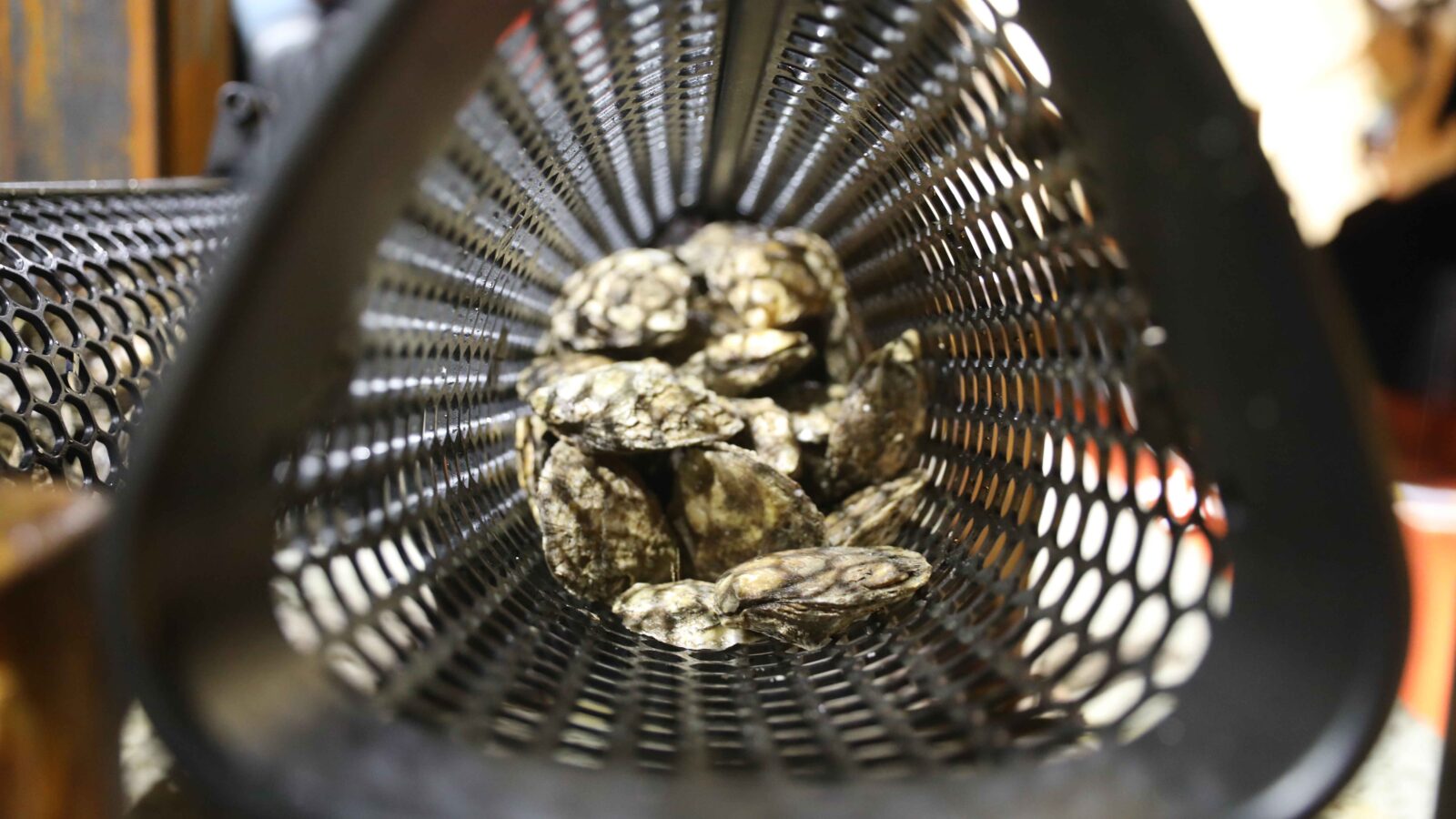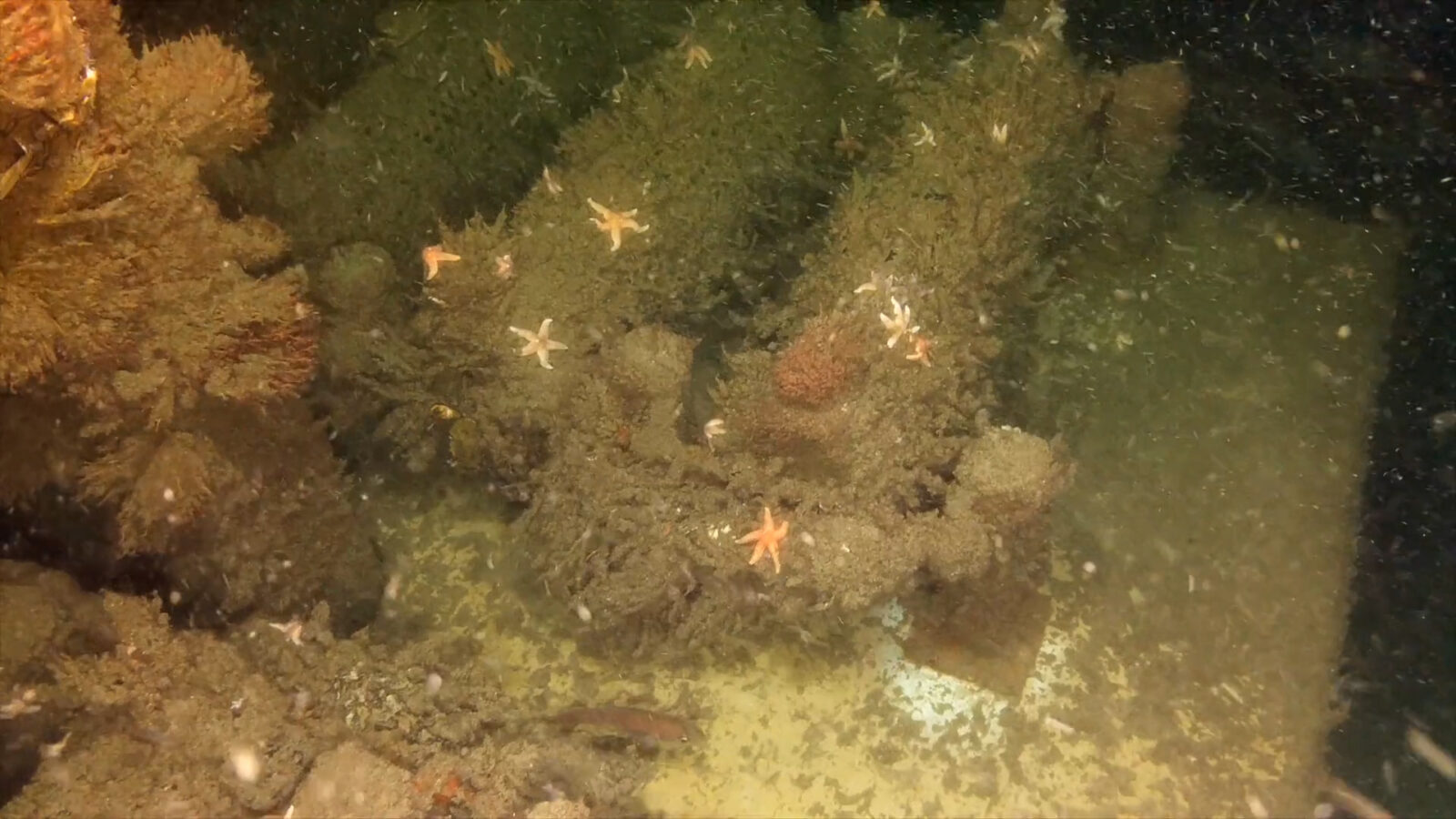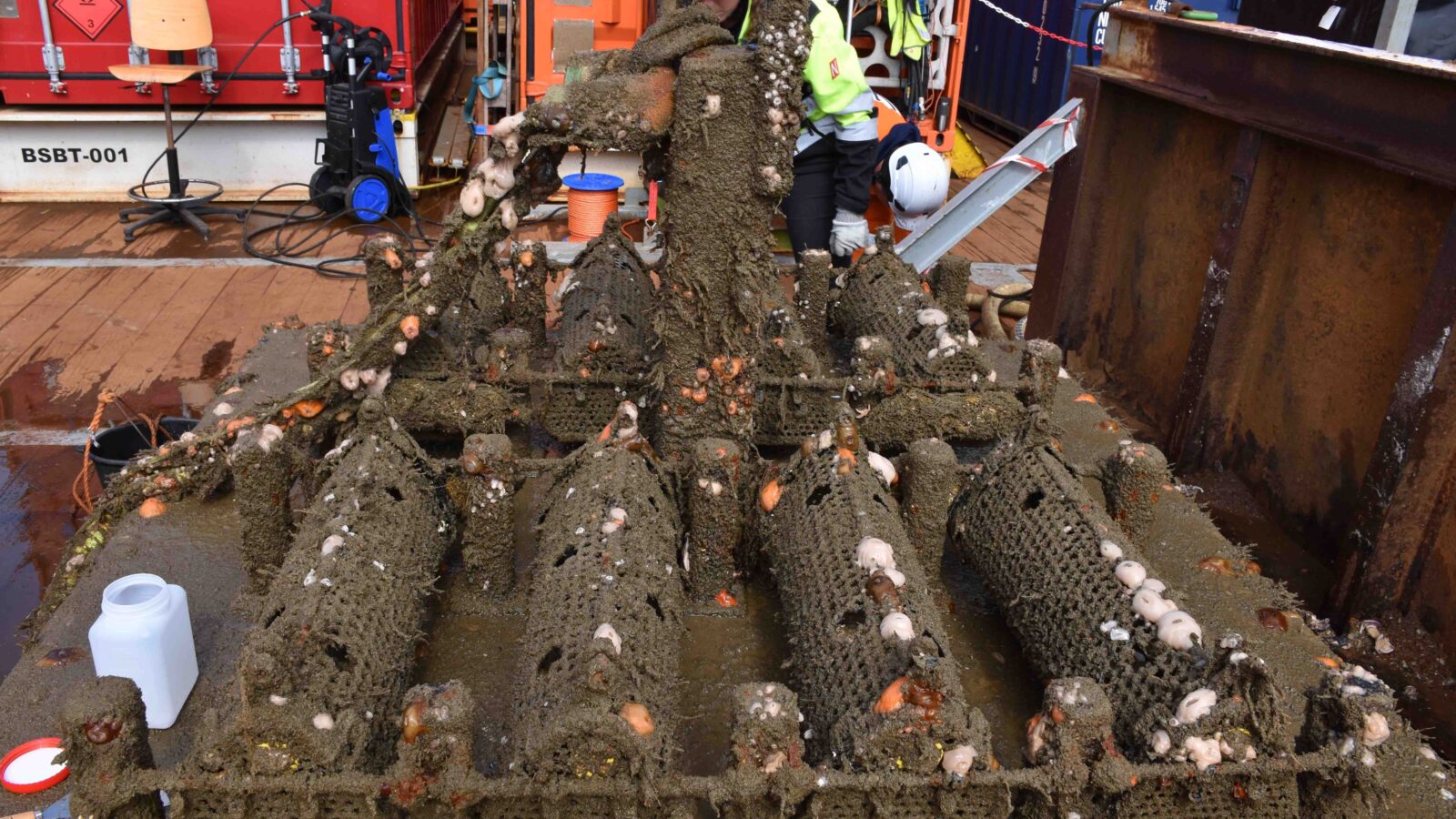
Blauwwind's offshore wind farm successful breeding ground for flat oysters
New research highlights the promising role that wind farms can play in enhancing North Sea biodiversity. A nature enhancement project in the Blauwwind wind farm (Borssele III & IV) reveals that flat oysters are successfully reproducing amidst offshore wind turbines.
The Rich North Sea, in collaboration with Blauwwind, placed a total of 2,400 flat oysters at the base of wind turbines on so-called 'oyster tables' in 2020. It now appears that the deployed oysters have produced offspring.
Last summer, a monitoring campaign by The Rich North Sea in collaboration with Eurofins AquaSense and Blauwwind confirmed the presence of young oysters near the turbines. The young oysters have established themselves on the adult oysters that were placed in oyster tables on the scour protection surrounding the wind turbines. Moreover, young oysters seem to have settled on the scour protection itself and on applied shell material.
Other insights gained from the Blauwwind wind farm emphasize that oyster tables in an offshore wind farm provide a successful breeding ground for flat oysters. The survival rate of the adult oysters after three years is quite high, reaching 70 percent. Additionally, 88 percent of the tested oysters were found ready for reproduction. When the water temperature is sufficiently high, these oysters can start producing larvae. Finally, it has been demonstrated that in summer of 2023 larvae of flat oysters are already present in the water of the wind farm.
Margot van Aalderen, project leader at The Rich North Sea: "The fact that flat oysters have the opportunity to reproduce is a positive step forward for the North Sea's nature. We are proud that, together with our project partners in Blauwwind's wind farm, we could create the conditions for the oysters to reproduce."
Strengthening underwater nature
The potential of offshore wind farms as a breeding ground for nature has been known. Fishing is not allowed on the seabed in the wind farm, and the hard substrate, such as the foundation and scour protection of the wind turbines, provide a suitable attachment point for shellfish and other marine life. Unfortunately, oyster reefs are no longer found in the North Sea on offshore locations. By placing flat oysters in oyster tables on the scour protection, they can now successfully reproduce in offshore wind farms. The ultimate goal for the oysters is to form a reef. The Rich North Sea is curious to see how the new oysters will further develop in the coming years in the Blauwwind wind farm.
Michael Evans, Technical Asset Manager at Blauwwind: "It's fantastic news that flat oysters in our wind farm are reproducing. We now have evidence that an offshore wind farm such as ours can be a suitable location as a breeding ground for flat oysters. We hope this inspires many other wind farm owners to start similar initiatives."
No diseases detected
Another significant outcome is the absence of Bonamia parasites in the oysters in the Blauwwind wind farm. This is good news, as the parasite is a known pathogen that has caused significant mortality among oysters in the past.
About The Rich North Sea
The Rich North Sea is a program founded by Natuur & Milieu (Nature & Environment) and the North Sea Foundation investigating how we can boost ecological development in the North Sea by utilizing the unique conditions offered by wind farms. Due to bottom disturbance, diseases, and changed environmental factors, biodiversity has significantly decreased in the last centuries, leading to the disappearance of many fish, shellfish, and other marine life. The Rich North Sea program explores how innovative structures and reefs can enrich the North Sea floor. Thanks to a contribution from ‘het Droomfonds’ of the National Postcode Lottery, the Rich North Sea program can pursue this ambition.
Images: The Rich North Sea


